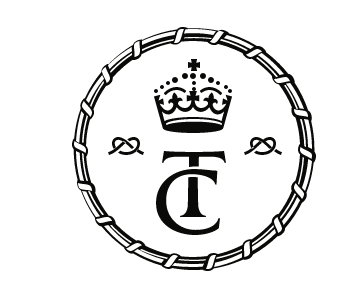
Close

Built: 1511
Type of Architecture: Tudor
A captivating history surrounds the castle, which was built over 500 years ago by the Third Duke of Buckingham, Edward Stafford. Stafford, who was the country’s second richest man – only to King Henry VIII – wanted the castle to represent his wealth and status. Thornbury Castle exudes this opulence throughout with ornate door arches and enormous fireplaces adorned with his emblem, The Stafford knot. In 1521 Edward Stafford was tried and executed for treason by Henry VIII and Thornbury Castle was seized by the monarch. In 1535 Henry VIII stayed in the castle with Anne Boleyn and today guests have the opportunity to relive history by staying in the same room that they shared. The Castle fell into disrepair in the 1650s as a victim of the English Civil War which saw the Royalists and Parliamentarians clash between 1642 and 1651. It wasn’t until 1824 that Thornbury Castle would be restored to its former glory that you see today by the historic Howard family.

Edward Stafford, 3rd Duke of Buckingham – Born in 1478 in Brecon Castle, Wales and Died in 1521 in London, England
King Henry VIII – Born in Palace of Placentia, London in 1491 and Died in Palace of Whitehall, London in 1547
Edward VI – Born in Hampton Court Palace, London in 1537 and Died in Palace of Placentia, London in 1553
Queen Mary I ”Bloody Mary” – Born in Palace of Placentia, London in 1516 and Died in St. James’s Palace, London in 1558
William Howard, Viscount Stafford- Born in London, England in 1614 and Died in London in 1680
Mary Stafford, 1st Countess of Stafford – Born in London in 1620 and Died in 1693
Lord Henry Thomas Howard – Born in 1766 and Died in 1824
Edward Stafford Howard – Born in 1851 and Died in London, England in 1916
The embodiment of regal opulence, Thornbury Castle was once the country retreat of none other than King Henry VIII. Dating back to the early 1500s, this historic castle is located in the inviting landscape of the South West of England. The castle itself is set amongst grounds dotted with cedar and sequoia trees, meticulously manicured lawns, and a number of picturesque gardens. With its octagonal tower, grand bay windows, walled courtyards, and impressive turrets, Thornbury Castle is quite simply the epitome of Tudor splendour.
The first recorded owner of the Thornbury lands and estate was Britic, the Saxon Lord of Thornbury Manor, who served as ambassador to the Court of Baldwin, Count of Flanders in 1019. During this time, Baldwin’s daughter, Matilda, brazenly proposed his hand in marriage, which was denied by Britic. Following Britic’s rejection, Matilda went on to marry William, Duke of Normandy. In 1066, when the Battle of Hastings was won by the Duke of Normandy – later known as William the Conqueror – he claimed ownership of all of England’s land, including Thornbury Manor, which he gifted to his loving wife, Matilda. Thus, in a strange turn of events, the woman Britic had once scorned took rightful ownership of his beloved estate.
In 1314, yet another military defeat influenced the inheritance of Thornbury Manor. Gilbert de Clare was killed at the battle of Bannockburn and Thornbury estate was passed onto the Staffords, where it would remain for three centuries. In 1510, Edward Stafford set out on a grand endeavour to create a home that could rival that of the then King, Henry VIII. As the second wealthiest man in the country – to none other than the King – Stafford was determined to create an impressive and opulent display of his riches by transforming his manor house into the magnificent fortified castle that still stands today – Thornbury Castle.
However, after all his determination, Edward Stafford was not able to enjoy the fruits of his labour as, in 1521, he was summoned to stand trial in London. As a descendant of King Edward III who was known to have made several proclamations against the crown, he was perceived as being a threat to the Tudor dynasty and was found guilty for acts of treason. Stafford was beheaded at Tower Hill on the order of King Henry VIII and, following his grisly death, his properties and lands were all transferred to the King, who took a particular liking to Thornbury Castle. As such, King Henry VIII took his second queen, Anne Boleyn, to Thornbury in 1535, where they spent ten days in what is now called Henry VIII’s Bedchamber, which is accessed by an ancient spiral staircase still in use today.
Thornbury Castle remained a crown property until 1554, when Queen Mary I chose to return the estate to the Stafford family as an act of gratitude for the support that the family had shown her mother, Catherine of Aragon. Sadly, the castle fell to ruin during the 16th century, and the Staffords lost the estate for the final time in 1640, From that point onwards, the fortunes of Thornbury would wax and wane in line with the fortunes of the aristocratic families who were responsible for it.
Today, Thornbury stands as an exemplar of Tudor opulence. With its striking stone walls, regal fabrics and tapestries, and atmospheric dining rooms and halls, there is simply no better place to experience the extravagance of 16th century royalty.